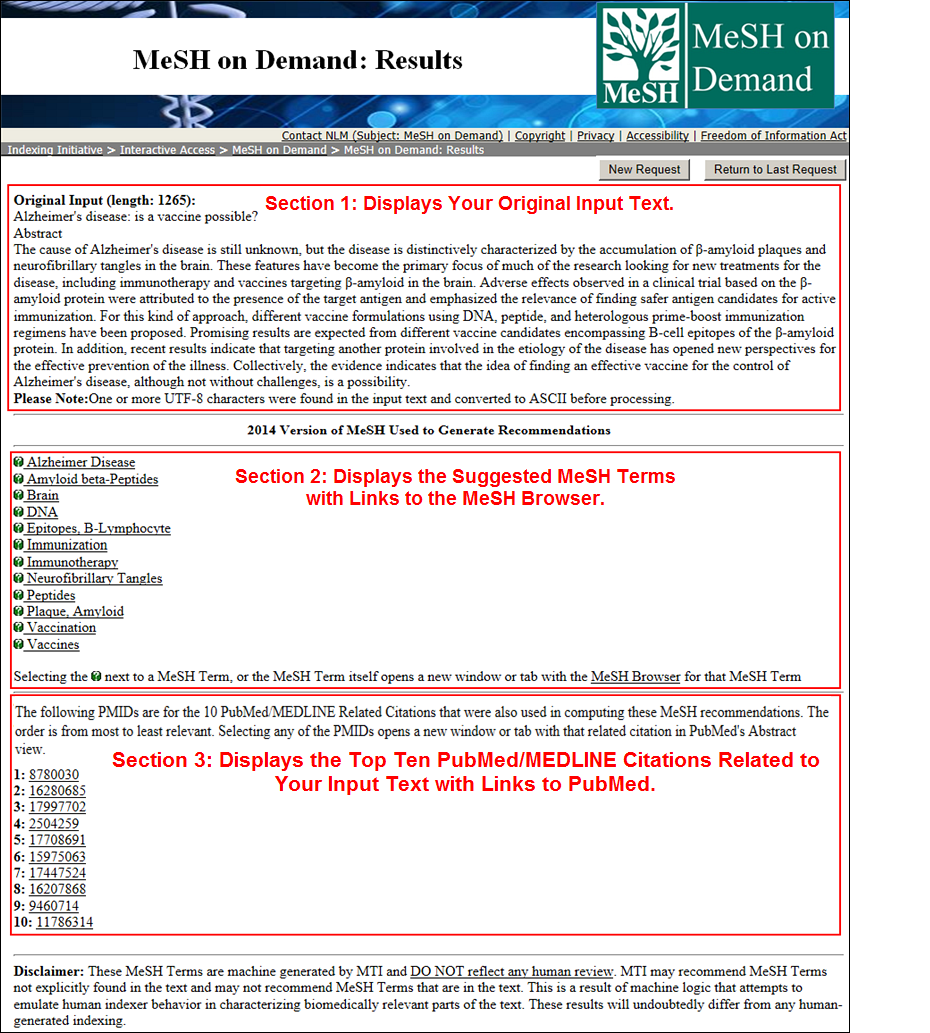What’s New for 2016 MeSH by Jacque-Lynne Schulman.
From the post:
MeSH is the National Library of Medicine controlled vocabulary thesaurus which is updated annually. NLM uses the MeSH thesaurus to index articles from thousands of biomedical journals for the MEDLINE/PubMed database and for the cataloging of books, documents, and audiovisuals acquired by the Library.
MeSH experts/users will need to absorb the details but some of the changes include:
Overview of Vocabulary Development and Changes for 2016 MeSH
- 438 Descriptors added
- 17 Descriptor terms replaced with more up-to-date terminology
- 9 Descriptors deleted
- 1 Qualifier (Subheading) deleted
and,
MeSH Tree Changes: Uncle vs. Nephew Project
In the past, MeSH headings were loosely organized in trees and could appear in multiple locations depending upon the importance and specificity. In some cases the heading would appear two or more times in the same tree at higher and lower levels. This arrangement led to some headings appearing as a sibling (uncle) next to the heading under which they were treed as a nephew. In other cases a heading was included at a top level so it could be seen more readily in printed material. We reviewed these headings in MeSH and removed either the Uncle or Nephew depending upon the judgement of our Internal and External reviewers. There were over 1,000 tree changes resulting from this work, many of which will affect search retrieval in MEDLINE/PubMed and the NLM Catalog.
and,
MeSH Scope Notes
MeSH had a policy that each descriptor should have a scope note regardless of how obvious its meaning. There were many legacy headings that were created without scope notes before this rule came into effect. This year we initiated a project to write scope notes for all existing headings. Thus far 481 scope notes to MeSH were added and the project continues for 2017 MeSH.
Echoes of Heraclitus:
It is not possible to step twice into the same river according to Heraclitus, or to come into contact twice with a mortal being in the same state. (Plutarch) (Heraclitus)
Semantics and the words we use to invoke them are always in a state of flux. Sometimes more, sometimes less.
The lesson here is that anyone who says you can have a fixed and stable vocabulary is not only selling something, they are selling you a broken something. If not broken on the day you start to use it, then fairly soon thereafter.
It took time for me to come to the realization that the same is true about information systems that attempt to capture changing semantics at any given point.
Topic maps in the sense of ISO 13250-2, for example, can capture and map changing semantics, but if and only if you are willing to accept its data model.
Which is good as far as it goes but what if I want a different data model? That is to still capture changing semantics and map between them, but using a different data model.
We may have a use case to map back to ISO 13250-2 or to some other data model. The point being that we should not privilege any data model or syntax in advance, at least not absolutely.
Not only do communities change but their preferences for technologies change as well. It seems just a bit odd to be selling an approach on the basis of capturing change only to build a dike to prevent change in your implementation.
Yes?
